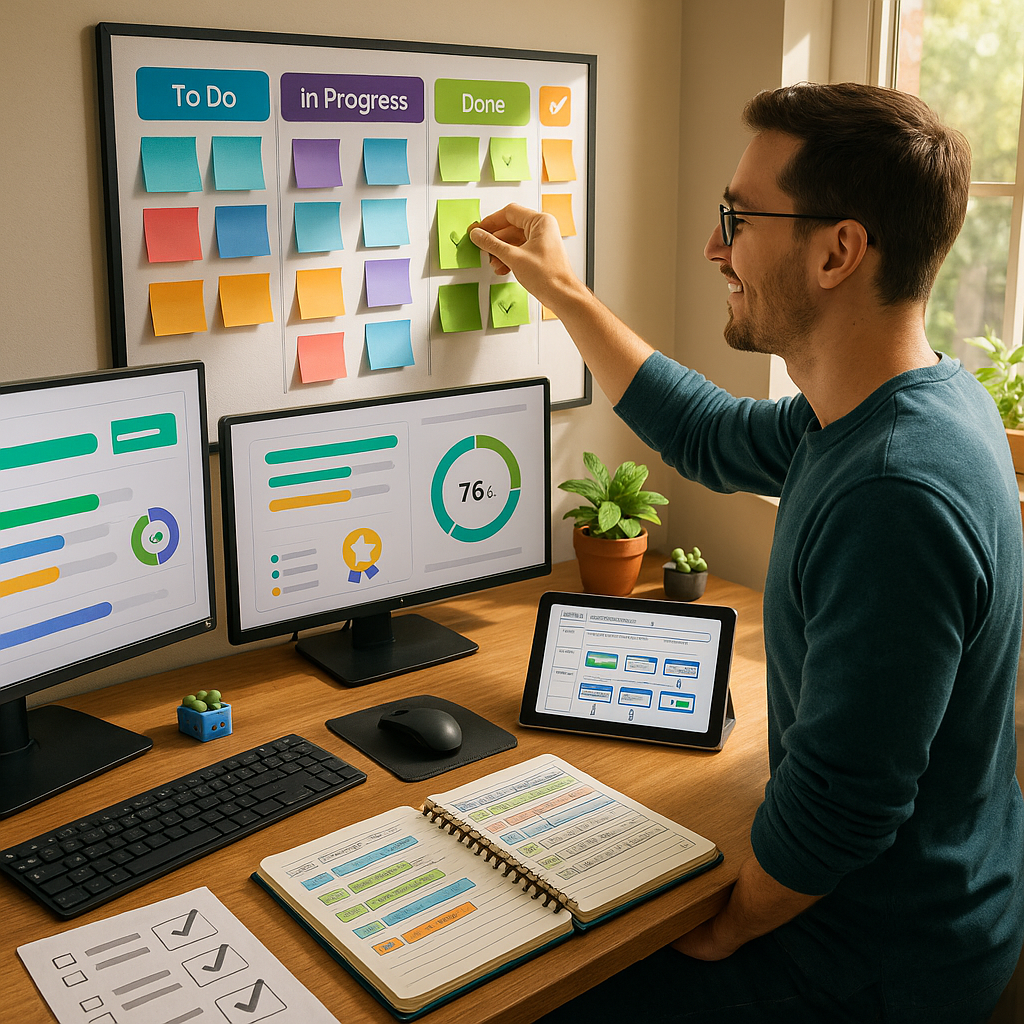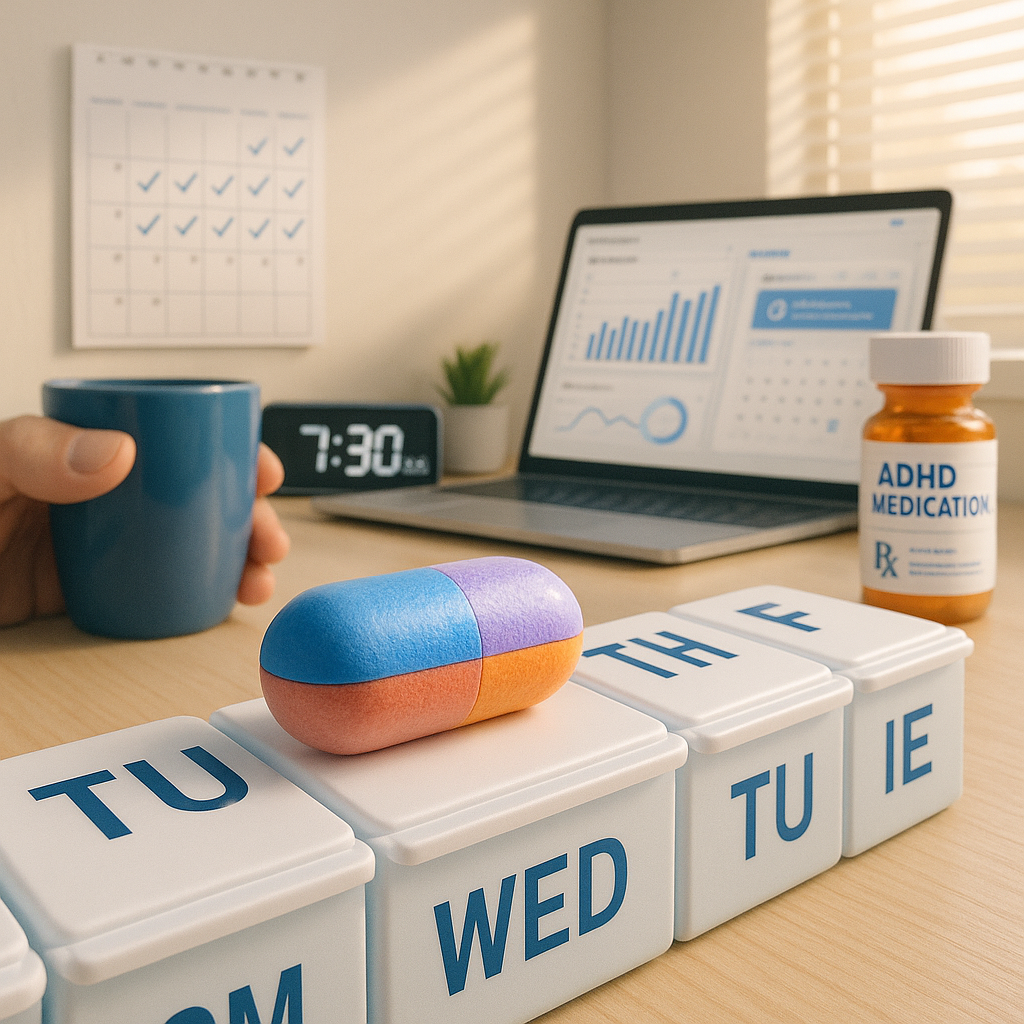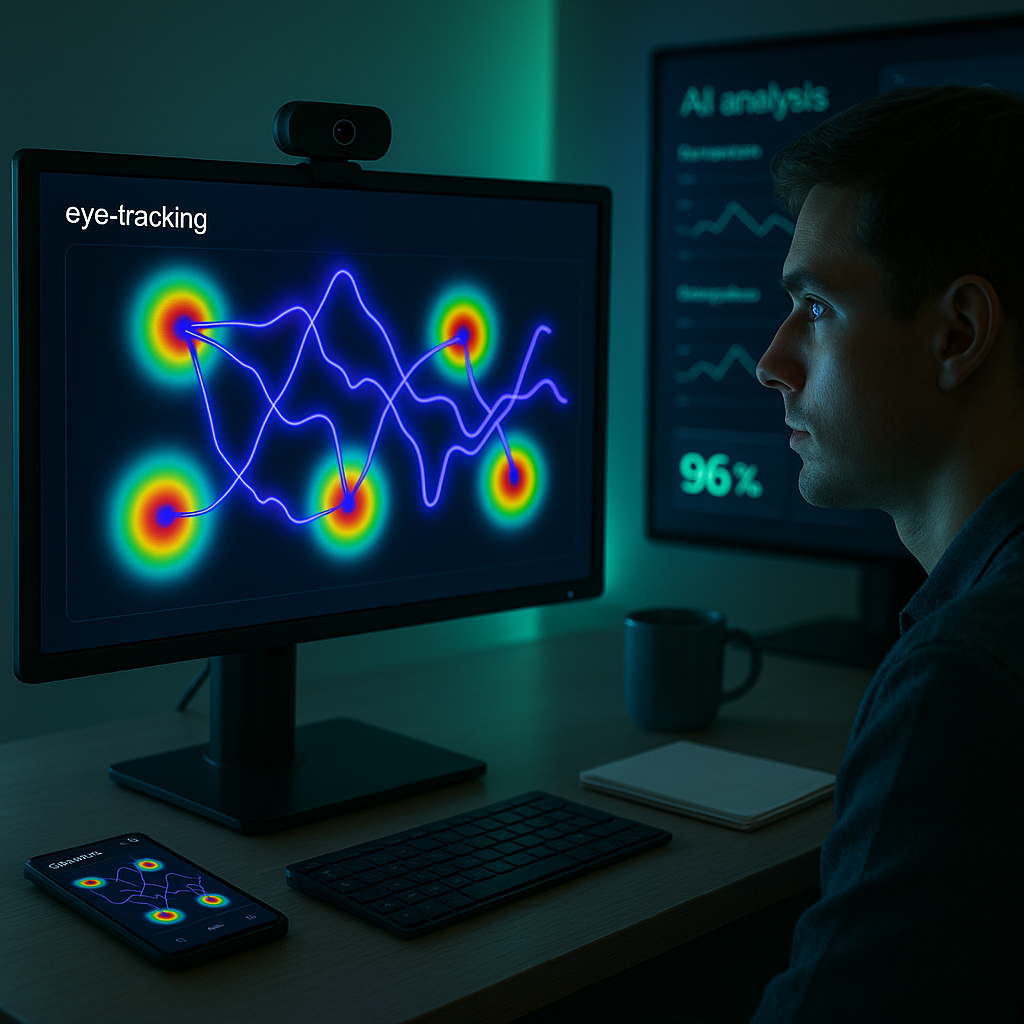Key Takeaways
-
Design for dopamine, not just discipline: ADHD-friendly workflow templates thrive when they feature visual cues, instant feedback, and rapid “done” markers. These create dopamine hits that fuel momentum, ward off burnout, and keep motivation high.
-
Visual workflows cut through chaos fast: Swapping out dense text for intuitive boards, color-coded checklists, and timelines delivers clarity, making complex operations more accessible for ADHD minds and minimizing overwhelm.
-
Immediate feedback loops keep motivation alive: Systems offering real-time progress signals (like check-ins, celebratory pop-ups, or visible progress bars) counteract forgetfulness and boost follow-through, turning small wins into ongoing momentum.
-
Adaptive automation beats rigid routines: Dynamic automations and batchable task sets flex with fluctuating focus and energy levels. This approach makes it easier to keep moving, even on less productive days.
-
Delegation frameworks for cognitive relief: ADHD-friendly delegation tools break projects into bite-sized, action-oriented steps. This reduces the mental load of handoffs, builds confidence, and boosts trust in the process for solo entrepreneurs and team leaders alike.
-
SOPs reimagined for ADHD brains: Modular, visual standard operating procedures (flowcharts, GIF step guides, or interactive videos) support executive function and turn “how-tos” into repeatable, intuitive habits.
-
Reduce context switching with attention-aware design: Bundling related tasks, integrating automation, and using tools that minimize the need to jump between apps lowers friction. This helps maintain focus, especially for those with scattered attention spans.
-
Hidden advantage: Celebrate progress to lock in consistency: Systems that embed micro-rewards and playful completion signals foster positive feedback loops, making workflow adherence satisfying rather than a slog.
By putting these principles into practice, you go far beyond basic organization. You reclaim agency, scale with less stress, and unlock the creative superpowers that drive your business forward. Let’s explore actionable ADHD-friendly templates and smart automations designed for real-world success across industries.
Introduction
Most productivity advice falls flat for ADHD founders. What works for the average brain often feels like trying to run a marathon in flip-flops. You may move forward, but the process is exhausting and unsustainable. Building a business with neurodivergence isn’t about forcing more discipline. It’s about deploying workflow templates and scalable systems that match your unique wiring, spark motivation, and make work feel not just possible, but genuinely doable.
Integrating ADHD-friendly workflow templates transforms chaos into clarity, utilizing visual cues, instant feedback, and automation that adjusts to your energy, not the other way around. These systems streamline daily operations for small business owners, freelancers, and creative professionals. Delegation shifts from overwhelming to a source of cognitive relief. Let’s unlock framework examples and intelligent automation tools that reduce friction, celebrate progress, and help you scale your business in a way that honors how your brain really works.
Why Traditional Business Workflows Fail ADHD Entrepreneurs
For many ADHD entrepreneurs, conventional business workflows create more friction than flow. Their rigid, linear structures assume consistent energy, unwavering attention, and sequential task completion. Traits that don’t always align with neurodivergent cognition.
The Mismatch of Linear Systems
Traditional workflows typically depend on:
- Sequential task completion
- Consistent daily routines
- Long-term planning horizons
- Dense written documentation
- Minimal context switching
For ADHD minds, these methods create significant roadblocks. As one founder described, “I had shelves full of planners and project management books. Each one promised organization, but they all assumed I could stick to the same system day after day. That’s just not how my brain works.”
Hidden Cognitive Load
A deeper look reveals several pain points:
- Complex categorization: Systems demanding constant sorting and prioritization can create cognitive fatigue.
- Rigid time-blocking: Approaches that ignore daily energy fluctuations often fail.
- Approval bottlenecks: Multi-step processes slow momentum and create frustration.
- Text-heavy instructions: Dense documentation fails to engage visual processing strengths, leading to reduced adoption.
Research on neurodivergent business owners shows that 78% abandon traditional workflow systems within three months, citing overwhelm and plummeting productivity.
Designing ADHD-Friendly Workflow Templates
Instead of battling natural cognition, ADHD-friendly workflow templates are built to support brain wiring through structure plus flexibility and engaging visuals.
Visual-First Framework Design
The foundation of these systems includes:
- Color-coded task categories: Instantly convey status and urgency.
- Visual progress indicators: Use progress bars, checklists, or Kanban boards to turn progress into a visible reward.
- Clear start/finish markers: Provide immediate clarity on what’s next and what’s done.
- Embedded reward triggers: Integrate notifications, stickers, or sounds to encourage continued effort.
- Flexible timeframes: Adapt to shifting focus and fluctuating energy levels.
Energy-Aligned Task Batching
Organize workflows around your natural productivity cycles rather than deadlines:
- High Focus Tasks: Deep work like strategy, complex problem-solving, or creative production (early mornings or after a burst of movement).
- Medium Focus Tasks: Moderate energy activities such as client meetings, brainstorming, or drafting content.
- Low Focus Tasks: Simpler tasks including data entry, administrative updates, or organizing digital files, ideal for energy dips.
This approach reflects the real world of entrepreneurs across fields. It lets a marketing team batch campaign analysis in the afternoon slump or a healthcare provider schedule patient data review during lower-energy hours.
Momentum-Building Elements
Powerful ADHD-friendly systems weave in:
- Visual checkpoints: Frequent, visible progress markers break work into manageable steps.
- Micro-rewards: Small celebrations (badges, sounds, or playful notifications) reinforce task completion.
- Context preservation: Notes, visual reminders, and screenshots help re-engage focus after breaks or interruptions.
- Energy tracking: Monitor and adjust workflow based on peak mental and physical periods.
Automating Business Tasks with ADHD in Mind
Effective automation isn’t about doing more, but about creating space to focus on high-value, brain-stimulating work. For ADHD entrepreneurs, automation should minimize decision fatigue while keeping information easy to see and act upon.
Strategic Automation Points
Top automation opportunities across industries include:
- Email sorting and smart response templates: Organize and triage high volumes of communication without constant context-switching.
- Social media scheduling with visual previews: Batch and visually review posts to maintain brand coherence.
- Invoice generation and payment tracking: Finance professionals and freelancers benefit from automated tracking, reminders, and visually intuitive dashboards.
- Client onboarding sequences: Standardize documents, appointments, and welcome materials for smoother transitions in healthcare, legal, and consulting firms.
- Document organization and retrieval: AI-powered tools automatically tag and sort files, reducing search stress in law, education, and research.
Visual Feedback Loops
The most successful systems feature:
- Real-time dashboards: Dynamic progress bars and analytics turn completion into a vivid experience.
- Visual notifications: Pop-ups or color changes act as instant dopamine boosts.
- Interactive checklists: Drag-and-drop or swipe features make task completion tactile and engaging.
- Gamified tracking: Earn badges or points to gamify business processes, boosting engagement in sectors from e-commerce to team project management.
One business owner increased task completion by 45% by integrating automation with visual feedback. As they noted, “Seeing my progress in real-time keeps me engaged. The visual cues help me stay on track without feeling micromanaged.”
ADHD-Friendly Delegation and Collaboration Frameworks
Successful collaboration for neurodivergent professionals means clear visual systems, simplified handoffs, and built-in accountability. No drowning in detail.
Visual Delegation Matrix
Create a streamlined delegation framework using:
- Color-coded responsibility levels: Team roles and ownership stand out at a glance.
- Visual decision trees: Map out decision points with arrows and highlights for faster choices.
- Quick-reference guides: One-pagers with icons and visuals to reduce reading fatigue.
- Template-based handoffs: Digital templates for transferring tasks ensure consistency, especially in fast-paced startups or growing agencies.
Communication Templates
A standard ADHD-friendly delegation kit includes:
- Visual task overview: What needs to be done, shown visually.
- Key outcome descriptions: Bullet-point deliverables to avoid ambiguity.
- Resource links: Direct links or attachments needed for the task.
- Timeline visualization: Color-coded deadlines or milestone charts.
- Check-in schedule: Embedded reminders or notifications to keep everyone aligned.
These templates shine in contexts as varied as a marketing agency managing campaigns, a healthcare office coordinating patient care, or a finance team delegating monthly reviews.
SOPs and Task Templates Reimagined for ADHD Brains
Standard Operating Procedures (SOPs) are often dry, text-heavy, and ignored. For ADHD and neurodivergent minds, SOPs should be dynamic, modular, and, above all, visual.
Visual SOP Design
Key elements for engagement and retention:
- Flowchart-based processes: Branching diagrams map steps clearly.
- Screenshot-heavy instructions: Show, don’t just tell. This is especially helpful for software and technical workflows.
- Video demonstrations: Short clips or GIFs illustrate each step for platforms in education, healthcare, and retail.
- Quick-reference checklists: Strip down to essentials, making SOPs digestible at a glance.
- Visual troubleshooting guides: Icons, error examples, and branching visuals reduce confusion in IT and operations.
Dynamic Documentation
Upgrade documentation by:
- Auto-updating: Integrate platforms that refresh content in real-time, ensuring procedures stay current.
- Visual search features: Let users find steps via icons or keyword highlights.
- Version history at-a-glance: See what changed and when, using timelines or charts for transparency.
- Graphical process links: Connect related SOPs visually, encouraging systems-level thinking in collaborative teams.
Industries from healthcare (medication administration guides) to finance (investment process checklists) reap the rewards of this visual, modular approach.
Celebrating Progress and Embedding Positive Motivation
The most effective ADHD workflow systems use celebration and achievement tracking as built-in fuel for motivation.
Achievement Tracking System
Elevate progress tracking with:
- Digital badges: Awarded for major milestones across projects or routine tasks.
- Progress bars: Let users see how close they are to completion for ongoing efforts.
- Achievement galleries: Collect and display wins visually. Perfect for team environments or individual reviews.
- Time-lapse project visualization: Watch progress unfold, reinforcing a sense of motion and accomplishment.
Motivation Amplifiers
To build lasting habits and momentum:
- Visual streak tracking: Highlight periods of consistency (days, weeks, or sprints completed in a row).
- Team celebration rituals: Scheduled shoutouts, digital parties, or GIF reactions for hitting goals.
- Client win showcases: Create visual displays of client successes to foster pride and accountability.
- Progress photography: Before-and-after snapshots for projects. This is especially impactful in creative or physical tasks.
A marketing agency owner shared, “Adding visual celebration triggers increased our team’s project completion rate by 60%. Now, finishing tasks feels rewarding instead of just relieving.”
Conclusion
Traditional business systems built on linear routines and dense documentation fall short for ADHD entrepreneurs and neurodivergent professionals. The path to sustainable success lies in embracing visual-first frameworks, energy-aligned task batching, and automation tailored to the unique contours of neurodivergent thinking. By making the most of visual delegation, interactive SOPs, and built-in celebration triggers, business owners not only reduce barriers to productivity. They tap into creative and strategic capacities that conventional methods often stifle.
Looking forward, the most successful businesses will be those that design systems amplifying neurodivergent brilliance rather than forcing conformity. For ADHD entrepreneurs, shifting toward adaptive, visually engaging, and motivating workflows isn’t just a productivity upgrade. It’s a strategic reimagining that turns differences into superpowers. The real opportunity lies in deciding not if you will transform your workflows, but how boldly you’ll craft them to let your unique mind spark and scale in a world hungry for fresh ideas and genuine impact.





Leave a Reply